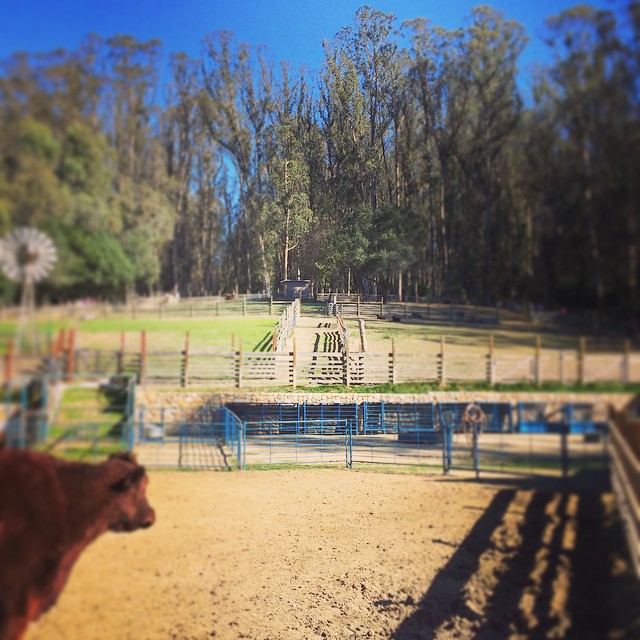Agroecology is the study of ecological processes within an agricultural system. An Agroecological Master Plan action-orientes scientific principles to create environmental, economic, and social benefits. Moreover, the implementation of the plan should bring long-term management strategies that will benefit future generations.
Farmscapes are inherently complex ecological systems. Unfortunately, the 20th Century saw the decline of biotic integrity of cultivated lands due to increased monoculture plantings, chemical use, and short term thinking. Developing a solid farm master plan based in 21st Century scientific knowledge is a good first step towards returning land to a healthy state.
A good agroecological plan is based on in-depth interviews of the people who already know the land. Farm hands, former tenants, and neighbors always provide crucial insights and determine the goals of the plan. During this review, the project team both observes the current state of affairs of a property and attempts to determine the causes of any problematic issues.
As anyone who knows farming will tell you, there are almost always problems with farm land. Some fields are too wet, others too dry. Roads get washed out. Buildings need upgrades. Financial decisions are often confusing due to lack of long term security.
The agroecological master planning process is an outgrowth of extensive and thorough site review by experts. Depending on the site, experts can include soil scientists, ecologists, architects, and third-party farmers. These professionals will review and evaluate both broad and specific aspects of a site. Thy will ask and seek to answer key questions. For example:
What defining factors are driving the present functions of the agroecosystem?
How do the wild spaces and the cultivated spaces interact?
How have the past practices of landowners or farmers affected the viability and health of the agroecosystem? and,
Can the revenue generating practices on the land currently meet the goals of the landowner?
Once a thorough site review has been conducted, the key issues have been identified, and ecological and economic goals have been set, the master plan be developed. This plan addresses the agricultural functions of the property, but also addresses important sustainability issues, such as:
Existing flora and fauna;
Agroforestry (using trees and shrubs to improve soil fertility);
Forest management to establish habitat and timber harvest; and,
Improvements to drainage patterns that preserve property while creating habitat.
Master plans typically also recommend improvements to agricultural land use. This varies depending on the type of farm, but can include pasture management practices, soil amendments, reduction or elimination of hazardous chemicals, technological or equipment improvements, crop selection, or grazing practices. Recommendations are made to help integrate agricultural practices so they can better fit into and improve the surrounding environment. For example, conversion to no-till fields typically also lads to a reduction in nutrient runoff to nearby water bodies.
An agroecological master plan should view each property as a whole system, ensuring that the landscape, buildings, and community are functioning together and complementing each other. It should outline any proposed development, any changes in agricultural strategies, and should contain a comprehensive land stewardship plan of approach. It should also contain an implementation strategy, including a timeline that shows the sustainable nature of the proposed changes. A predicted cost and revenue analysis should be an output of any good plan as well.
Key Principles in Agroecology (excerpted and summarized from agroecology.org)
USE RENEWABLE RESOURCES: Use biological nitrogen fixation, Use naturally-occurring materials instead of synthetic, manufactured inputs, Use on-farm, recycled resources as much as possible, Reduce or eliminate the use of materials that have the potential to harm the environment or the health of farmers, farm workers, or consumers.
REDUCE TOXINS: Use farming practices that reduce or eliminate environmental pollution with nitrates, toxic gases, or other materials generated by burning or overloading agroecosystems with nutrients.
CONSERVE RESOURCES: Sustain soil nutrient and organic matter stocks, Minimize erosion, Use efficient irrigation systems, Use energy efficient technologies, Maintain local landraces/save seeds, Use heirloom varieties, Reduce expenditures.
MANAGE ECOLOGICAL RELATIONSHIPS: Reestablish ecological relationships that can occur naturally on the farm instead of reducing and simplifying them, Use intercropping and cover cropping, Integrate livestock, Enhance beneficial biota.
SUSTAINABLE LANDSCAPING: Maintain undisturbed areas as buffer zones, Use contour and strip tillage, Maintain riparian buffer zones, Use rotational grazing.
SUSTAINABLE MANAGEMENT: Intercrop, Rotate crops, Use polyculture, Integrate animals in system, Use multiple species of crops and animals on farm, Use multiple varieties and landraces of crops and animals on farm.
MAXIMIZE LONG TERM BENEFITS: Manage for long term profitability, Manage for long term soil health and fertility, Manage for long term community benefits.




